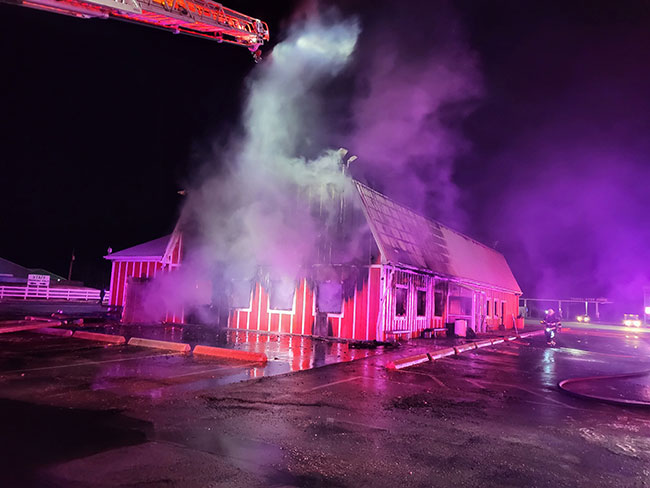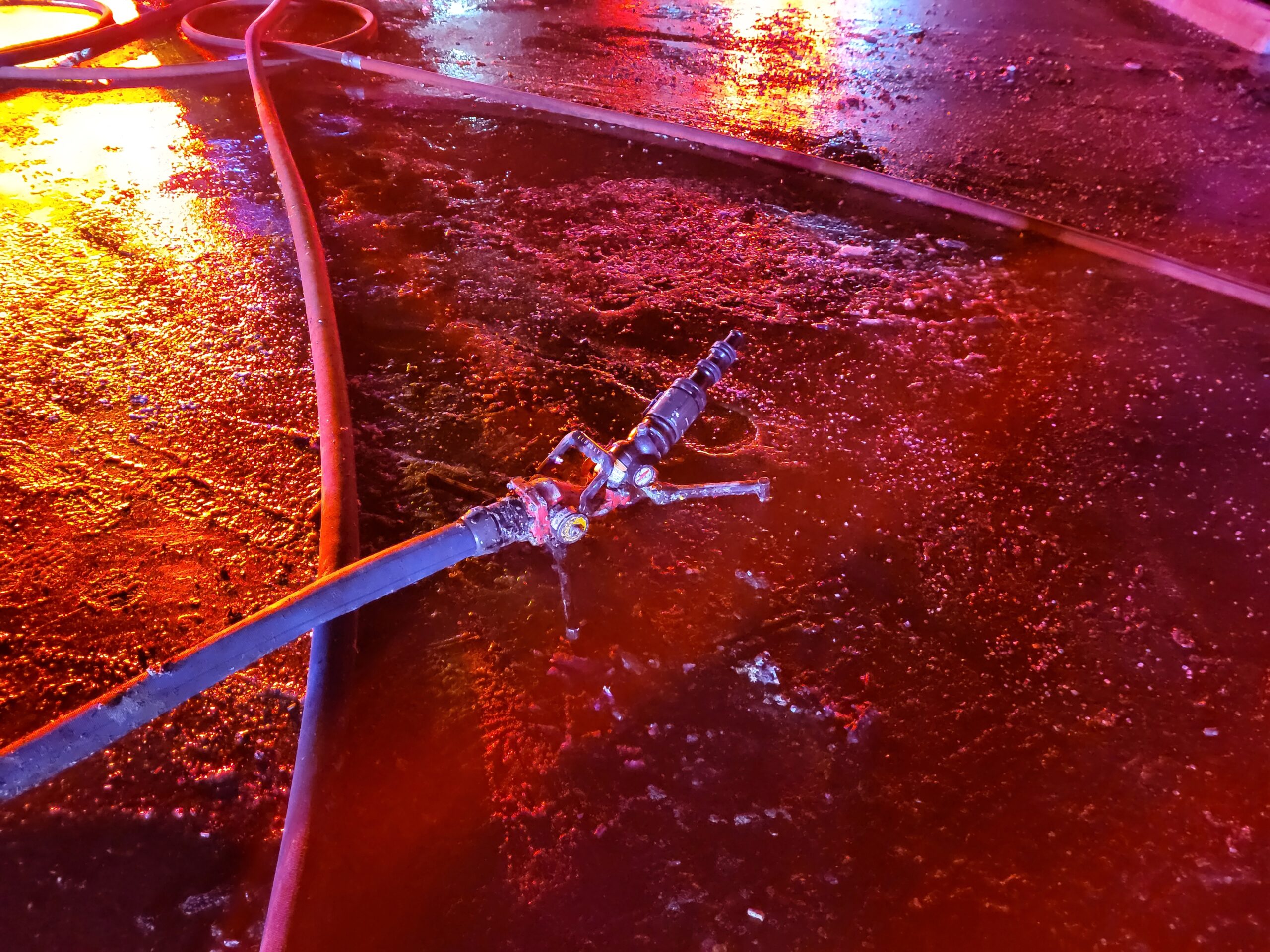
Back to basics: Big weapons for offensive and defensive fire fighting
By Mark van der Feyst
Features Cover Stories Photo 1.
Photo credit: Mark van der Feyst
Photo 1.
Photo credit: Mark van der Feyst Most engines and pumpers are equipped with a deck gun and/or a ground monitor for defensive operations. A defensive operation occurs when significant fire is present within a structure, making any interior operations impossible. In such cases, water is applied from the exterior in a defensive or distanced position.
When taking a defensive position, large amounts of water must be discharged from the nozzles of a deck gun or ground monitor. This same large amount of water, starting at 500 gallons per minute, can also be utilized for interior operations when mounting an offensive attack. Discharging large volumes of water will assist with interior operations when faced with high or large fire loads or deep-seated fires in large areas.
In Photo 1, we can see a commercial building with a fire burning both inside and outside. The large fire volume was significant enough to declare a defensive operation upon arrival. Once the fire was knocked down and suppressed enough, an interior operation took place to continue suppressing it. A switch to an offensive mode was indicated, and crews entered to continue knocking down the fire.
The crews were ordered to take in a 45mm handline along with the 65mm supplied rapid attack ground monitor. The monitor, pictured in Photo 2, is reserved for defensive operations and can also be used for offensive operations. It is very versatile, allowing one or two firefighters to advance it inside a structure and deliver large volumes of water.
One advantage of the rapid attack monitor is that it rests on the ground when water is flowing. To position it, the firefighter must lift and move it, potentially with the assistance of another firefighter managing the hose, or they can collapse the support legs, turn the monitor on its side, and drag it by the strap. Once in position, the legs can be extended again, placed on the ground, opened, and water can flow – as shown in photo 3 (inside the structure).

Photo 2.
Photo credit: Mark van der Feyst
With the rapid attack monitor on the ground, the nozzle reaction produced will not be directed against the firefighter but rather to the ground. This allows one firefighter to be both effective and efficient with a large caliber stream.
Another advantage of the rapid attack monitor is the reach of the stream. Inside a building, the stream’s reach allows for deep penetration of water to the fire, significant cooling of the surfaces, and ample water for fire suppression. If there is a need to clear drop ceiling tiles to check above the fire room, the stream’s power can easily blow away the tiles and expose the upper ceiling area.
The rapid attack monitor also allows for the extension of the hose line to a smaller or equally sized hose. The nozzle tips can be removed along with the stream shaper, with either an adaptor screwed on to reduce to a 38mm hose coupling or a gated wye attached to accommodate two hose lines, or additional sections of 65mm hose can be threaded on to extend the operation if necessary. The rapid attack monitor will then function as a gate valve or control valve; once the valve is opened and water is flowing, it will not shut off unless manually closed by a firefighter. The advantage of this tactic is that the initial water supply never needs to be turned off in order to extend the hose lines.
When the monitor detects any movement, the nozzle is directed upward to direct the nozzle reaction forces down to the monitor body. The forces are then transmitted to the ground, keeping the monitor in place. This allows the ground monitor to be unmanned if necessary.

Photo 3
Photo credit: Mark van der Feyst
For these types of monitors to be utilized in offensive or defensive operations with quick deployment, they must be set up on the engine or pumper with convenient access for the firefighter, pre-connected to the pump discharge with sufficient supply hose attached for at least 30m. If additional supply line is required, extra sections can be added to the initial deployment before the ground monitor is charged with water.
The rapid attack monitor can be mounted to the outside of the fire truck’s body or placed on top of the hose bed, which is sitting on top of the supply hose it needs. The downside to this option is that the height of the hose bed will either make it easy or difficult to garb and pull down. The spikes on the support legs can also puncture the hose it is sitting on.
Audit the engine or pumper in your station to see if it is set up and combat-ready for rapid deployment of ground monitors like the one pictured in Photo 2. If it is, then train on deploying the monitor with one firefighter. If it is not set up for quick deployment, do what you can to educate for the change.
Mark van der Feyst has been in the fire service since 1999 and is currently a Battalion Chief with the Six Nations Fire & Emergency Services as well as a part-time firefighter with the Fort Gratiot Fire Department. Mark is an international instructor teaching in Canada, the United States and India, and at FDIC. He is the lead author of the Residential Fire Rescue & Tactical Firefighter books. He can be contacted at Mark@FireStarTraining.com.